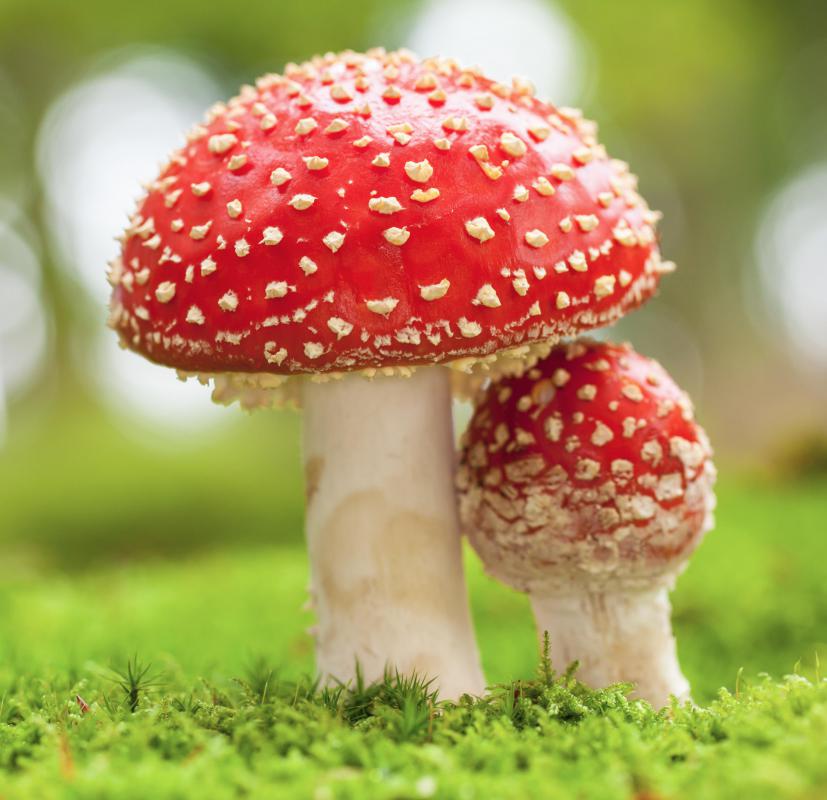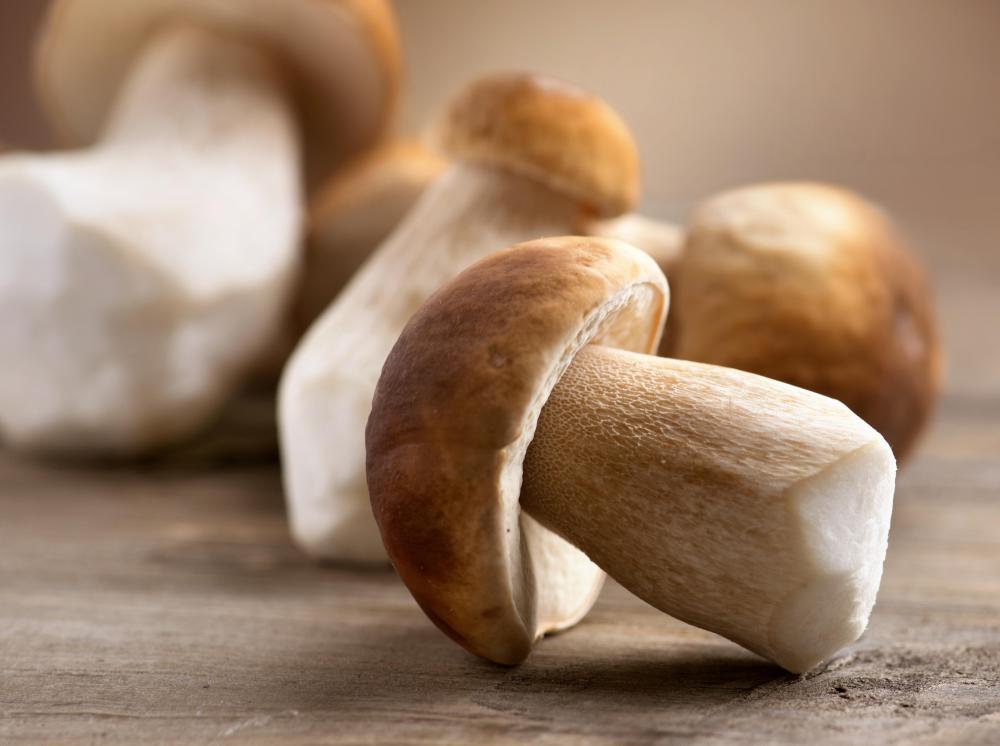At AllThingsNature, we're committed to delivering accurate, trustworthy information. Our expert-authored content is rigorously fact-checked and sourced from credible authorities. Discover how we uphold the highest standards in providing you with reliable knowledge.
What is the Difference Between Toadstools and Mushrooms?
Many people have incorrect ideas about the differences between toadstools and mushrooms, and this can get them into a great deal of trouble if they’re amateur mushroom hunters. Some think that the main difference is that toadstools are all poisonous versions of mushrooms, while mushrooms are not poisonous. This is incorrect, however, and can cause serious problems for a mushroom hunter. In reality, there is no real scientific difference between toadstools and mushrooms, and the names are basically interchangeable.
Those mushrooms classed as toadstools may not be toxic, or only mildly so, and many mushrooms are deadly. It’s often not possible to tell if a mushroom is edible (unless you’re buying it in a grocery store) based on looks alone, therefore, unless a person is an expert. In general, people should never eat wild mushrooms unless a professional mushroom hunter evaluates them.

Some people define toadstools as any fungi that do not have a centrally located cap, lack a stem or don’t have "gills" underneath the cap. In fact, fungi commonly found in woods that might be identified as toadstools, like polypores, are still mushrooms, even though they don’t have stems. These, however, like the Trametes versicolor, which looks like tiny rainbows and often grows on the bottom of trees or on fallen logs, may be called toadstools to distinguish them from mushrooms that are more typically “mushroom shaped.” This distinction from a scientific standpoint is not correct.

Others define certain fungi that have the mushroom shape as toadstools, among them, the fly agaric or Amanita muscaria, a red capped stemmed mushroom that is both poisonous and possesses hallucinogenic properties if ingested. The main distinction here is degree of toxicity. Again, this mushroom, though bright red with white polka dots on the top, looks very “mushroom-like” in shape and resembles those mushrooms shapes people can buy at a grocery store.
What remains important about toadstools and mushrooms are the following facts:
- They are the same and no scientific distinction exists between them.
- They cannot be defined by shape, color, or appearance, since there is no standard differentiation between them.
- Mushrooms aren’t fungi with caps and stems while toadstools lack caps and stems.
- Fungi are not defined by level of toxicity: anything classed as either may be nontoxic, mildly toxic, hallucinogenic or extremely poisonous.
- People should never consume anything classed as toadstool or mushroom without having it first examined by a professional mushroom hunter.
Frequently Asked Questions
What is the main difference between toadstools and mushrooms?

The primary distinction lies in colloquial usage; 'toadstool' is often used to describe poisonous or inedible fungi, while 'mushroom' typically refers to those that are safe to eat. However, scientifically, both terms fall under the umbrella of mushrooms, which are the fruiting bodies of certain fungi.
Are all toadstools poisonous?
Not all toadstools are poisonous; the term is a folkloric one without scientific basis. While many toadstools are indeed toxic, some are harmless. It's crucial to have expert knowledge before consuming any wild fungi, as misidentification can lead to serious health risks.
Can toadstools be used for anything other than food?

Absolutely. Toadstools, like other fungi, play critical ecological roles in decomposing organic matter and recycling nutrients. Some have medicinal properties or are used in traditional remedies. However, their utility should be approached with caution due to potential toxicity.
How can I safely identify edible mushrooms and avoid toadstools?
Safe identification requires education and experience. It's recommended to learn from mycologists or through reputable foraging courses. Always cross-reference multiple identification markers such as shape, color, habitat, and spore prints. When in doubt, do not consume. According to the Centers for Disease Control and Prevention, accurate identification is key to preventing mushroom poisoning.
Do toadstools have any benefits to the ecosystem?

Toadstools contribute significantly to ecosystems by breaking down dead organic material, thus enriching the soil. They also form symbiotic relationships with plants, enhancing nutrient uptake. This ecological service is vital for the health of forests and other habitats.
Are there any visual cues that can help distinguish toadstools from edible mushrooms?
Visual cues alone are unreliable for distinguishing toadstools from edible mushrooms, as there is great variation within fungi. Some toxic mushrooms can closely resemble edible ones. It's essential to consider multiple factors, including habitat, spore print, and expert consultation, rather than relying solely on appearance.
AS FEATURED ON:
AS FEATURED ON:















Discussion Comments
Come on how do you tell what the difference is? If its got a stem? Yes/No?
Mushrooms are good in your garden. They help rot wood and give your plants nutrients.
had to read through a lot of crap before i get to the 'there is no difference' bit - what a let down. i don't care about the destruction of the arguments of what 'other people classify' as what. I just wanted an answer.
how do I get rid of them in my garden?
# Mushrooms aren’t fungi with caps and stems while toadstools lack caps and stems. Looks like there is an error there.
tell people they are drugs and you don't want them in your yard. they will disappear in hours or even minutes on their own.
how do I get rid of them in my yard?
Why do mushrooms grow in house and plants and how do you get rid of them?
Post your comments